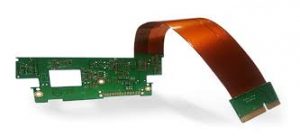Flexible PCBs Benefit Medical Devices
When medical devices need to be small and portable, flex circuits provide a solution. These are PCBs that can bend around the device’s packaging, or fold to fit into miniaturized enclosures. This makes them ideal for use in products like insulin pumps and wearable patient monitoring systems, as well as portable defibrillators and continuous positive airway pressure (CPAP) machines used to treat sleep disorders.
As PCB design advances, pcb flex technology is becoming more widespread. However, the challenges of designing with this material are not without their pitfalls. When designing a flex circuit, it is important to consider how the structure will be used and the impact this may have on the overall reliability of the finished product.
For example, when designing a flex circuit that will be subjected to dynamic bending, it is critical to minimize the risk of copper fatigue. This can be done by using a higher-grade metallization, such as rolled annealed copper (RA). This enables the conductor to be bent or crimped many times before fatigue cracking occurs. It is also necessary to reduce stress concentrations in the areas of the flex circuit that are expected to be bended. This can be achieved by avoiding sharp corners, and by staggered spacing of the conductors on multilayered flex circuits.

How Do Flexible PCBs Benefit Medical Devices?
Other considerations in the design process include minimizing the number of exposed layers, which increases the reliability of the circuit and decreases the chances of shorting due to stress from vibration or movement. It is also important to minimize the amount of buried or blind vias used, as these can increase the complexity and cost of the circuit. In addition, the choice of materials for the conductor layer is critical, as is the thickness-to-bend radius calculation.
Rigid-flex and flexible PCBs are a great solution for medical applications because they are resistant to harsh environments and feature low weight and thickness. In addition, they are durable and able to support heavy components with minimal damage. These are essential features in a life-saving medical device.
Another advantage of a rigid-flex PCB is that it can be used in both implantable and non-implantable applications. This flexibility allows the device to be designed with different functions, such as monitoring, drug delivery, or surgery, while maintaining its durability.
Moreover, PCB flex offers excellent thermal performance, dissipating heat more effectively than rigid PCBs due to its thin and lightweight construction. This thermal efficiency is crucial for high-power applications where heat generation can impact performance and reliability. By efficiently dissipating heat, flexible circuits help prolong the lifespan of electronic components and ensure optimal operation under demanding conditions.
With a full set of CAD tools and automated drawing tools in the Altium Designer software, it’s easy to create a flexible PCB that will meet your design requirements. Start your free trial today to find out how easy it is to use this powerful software.